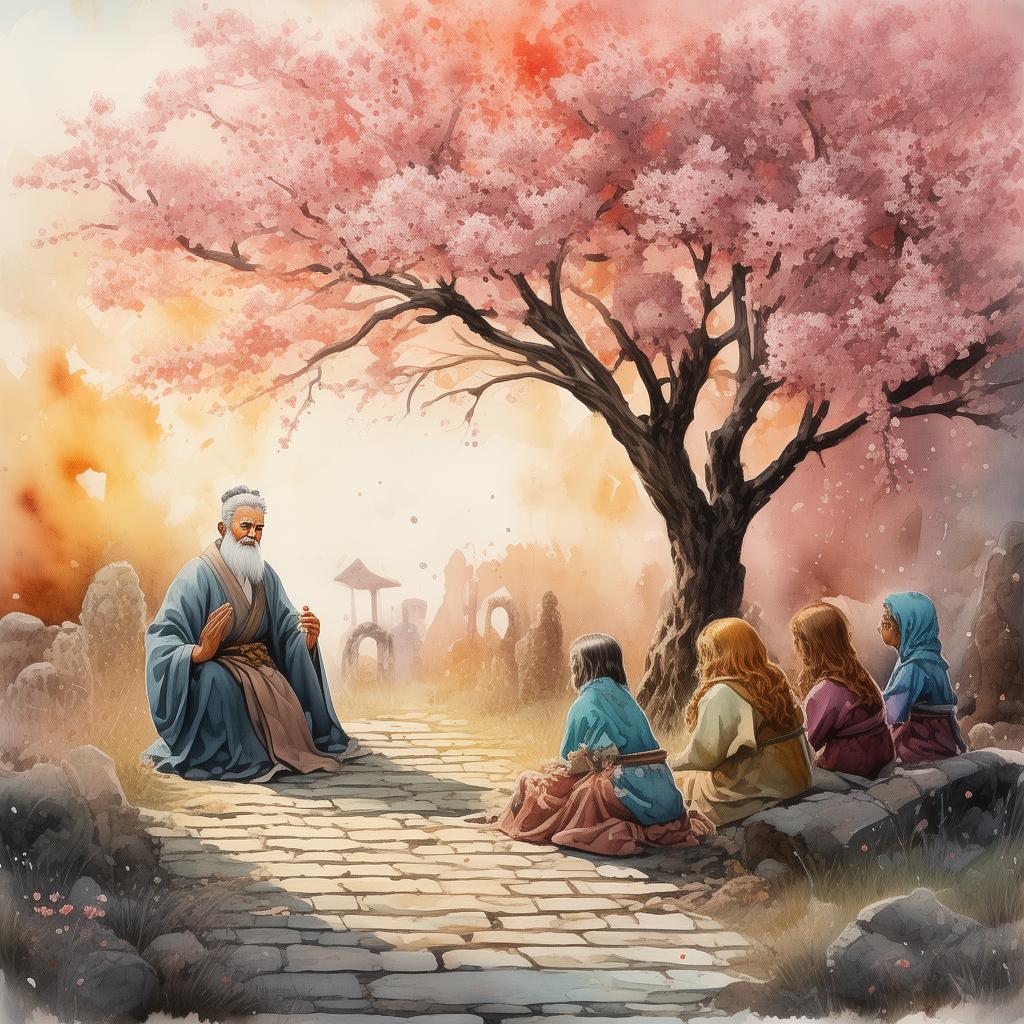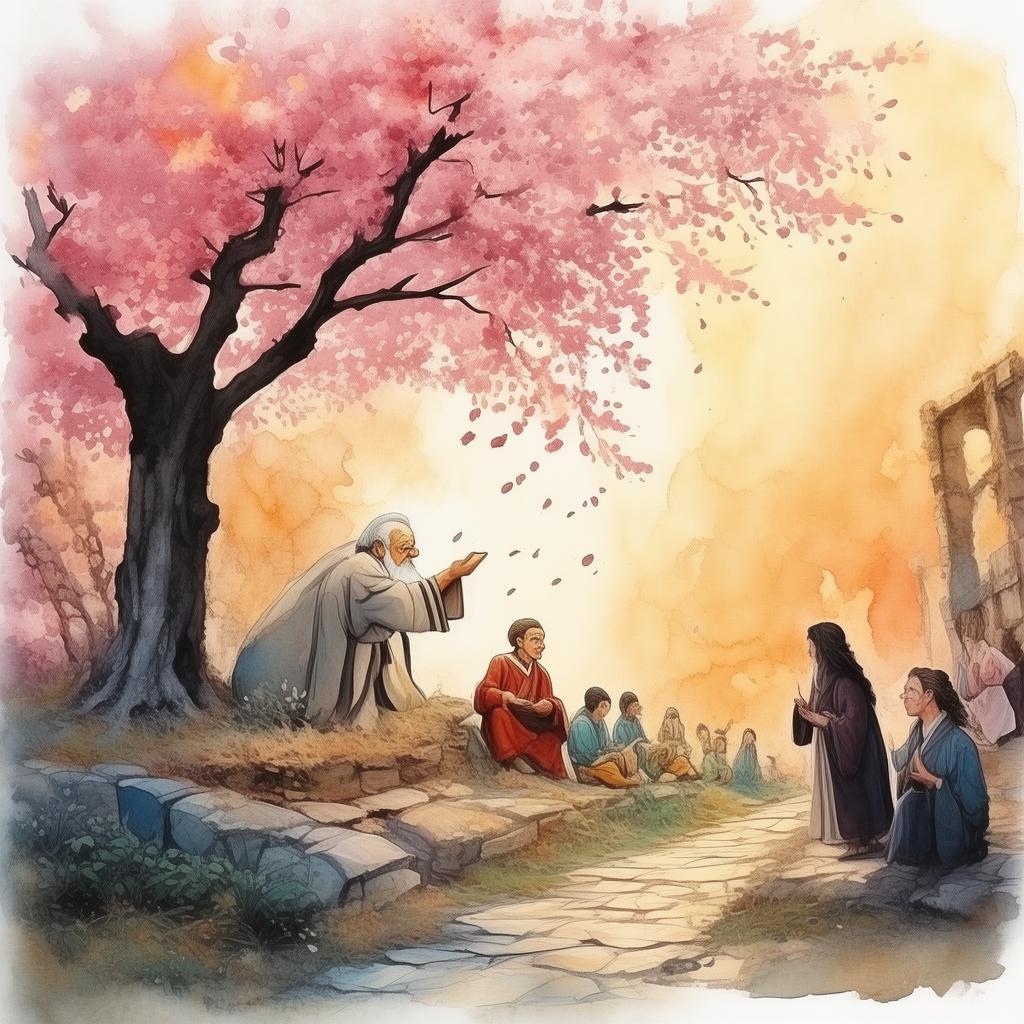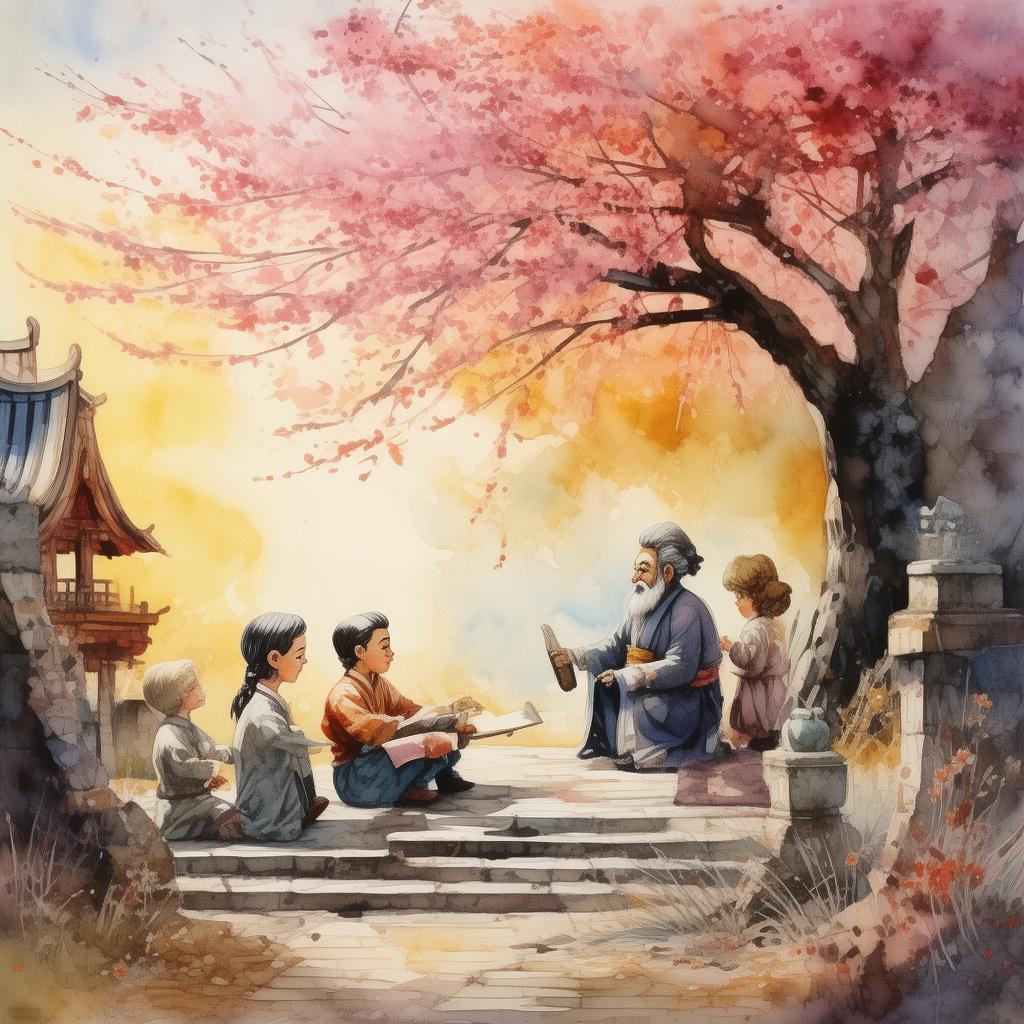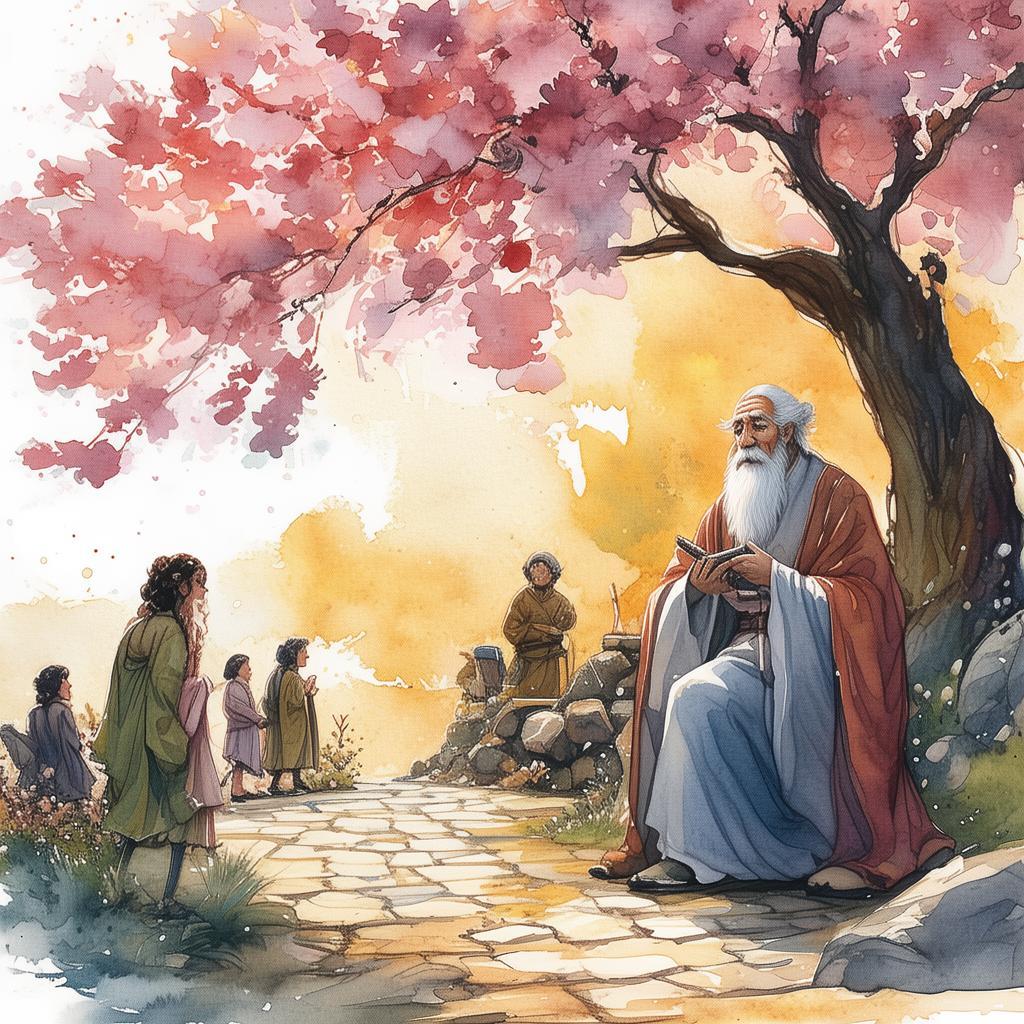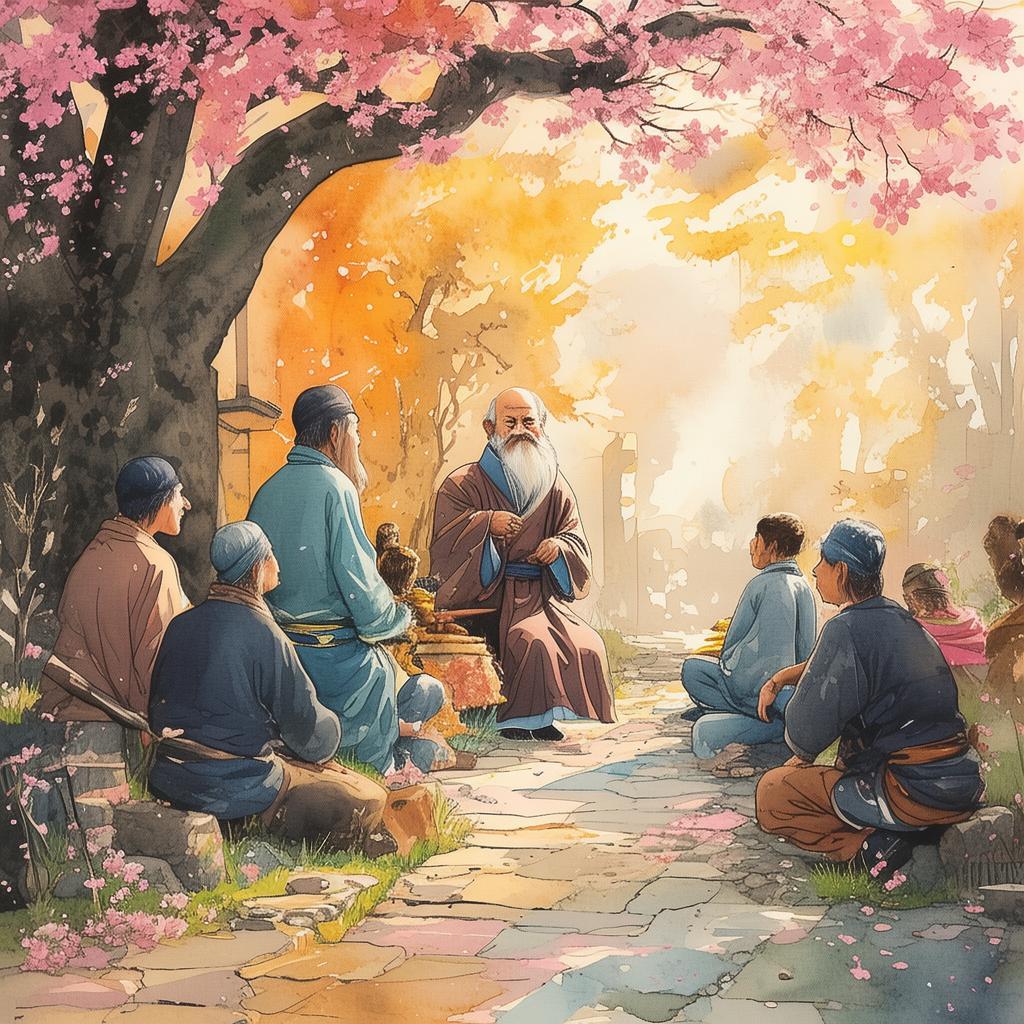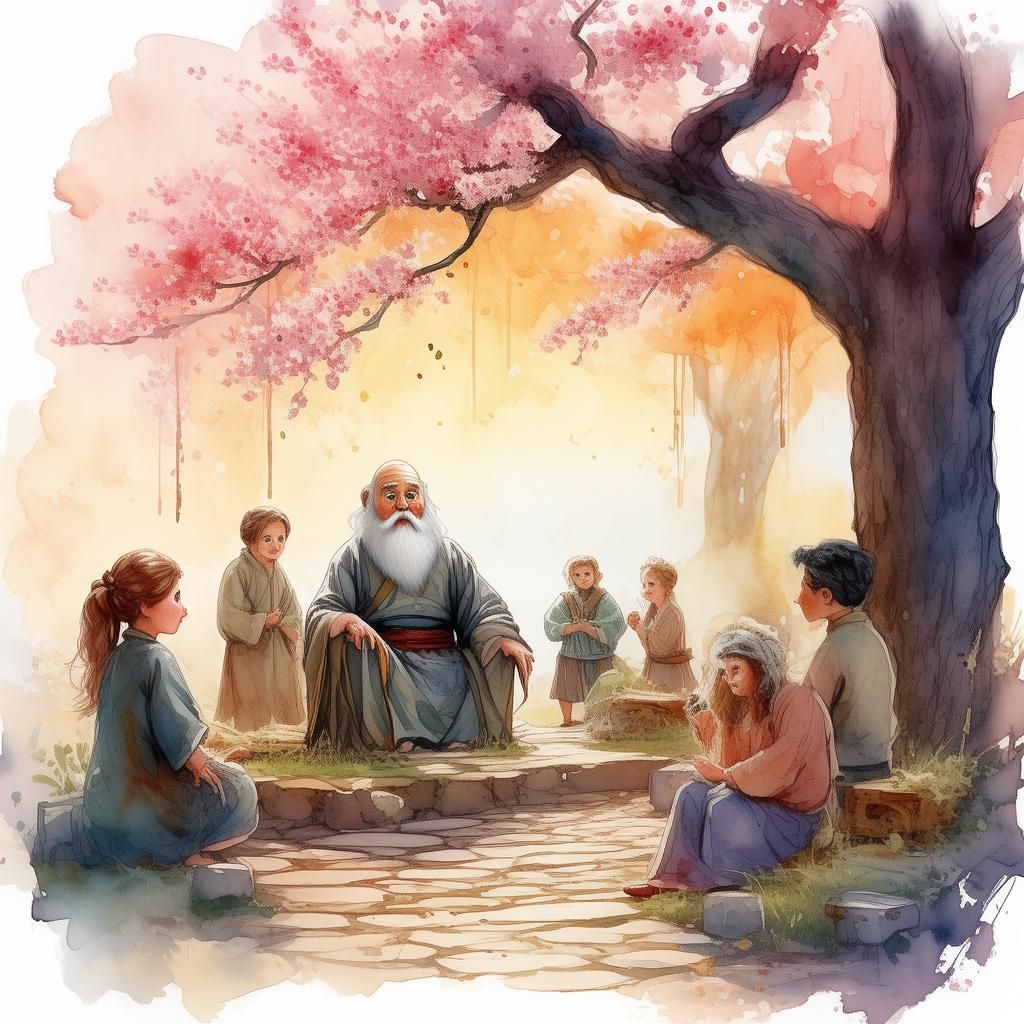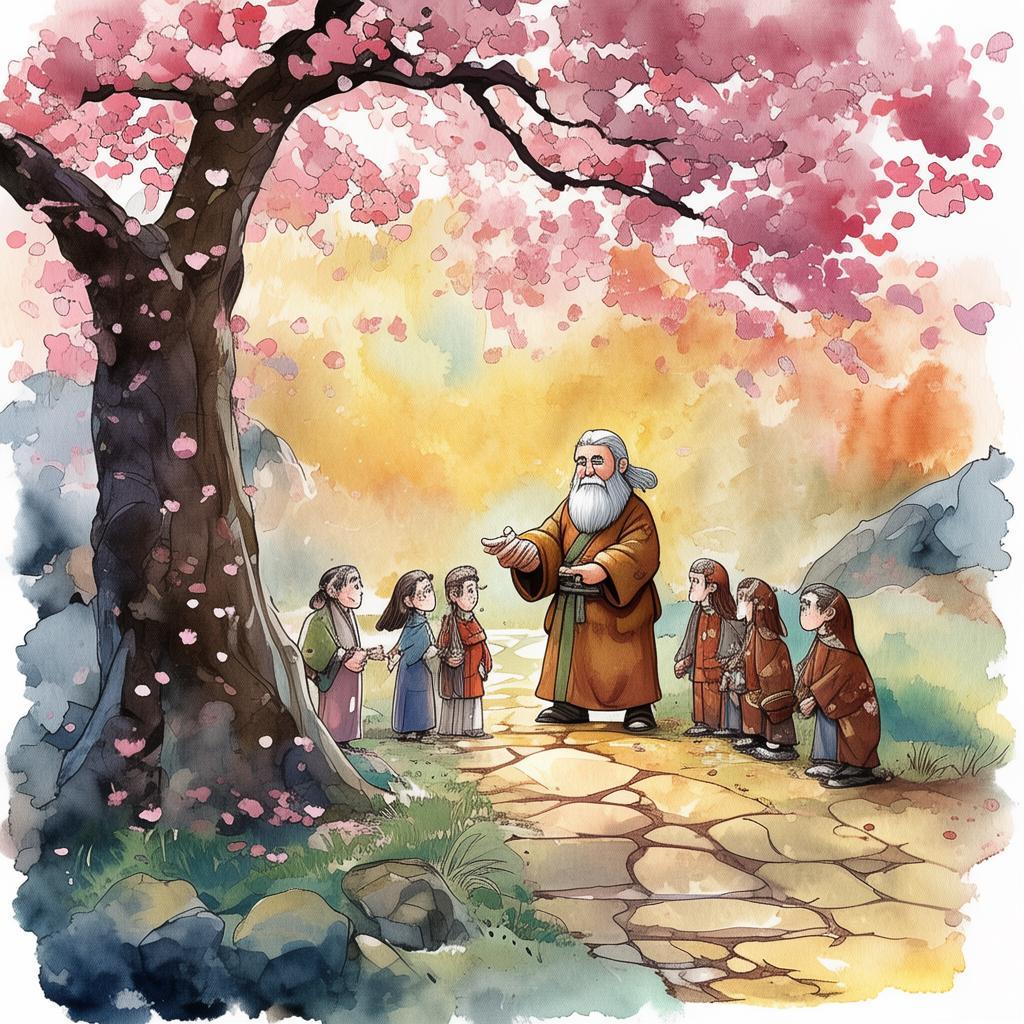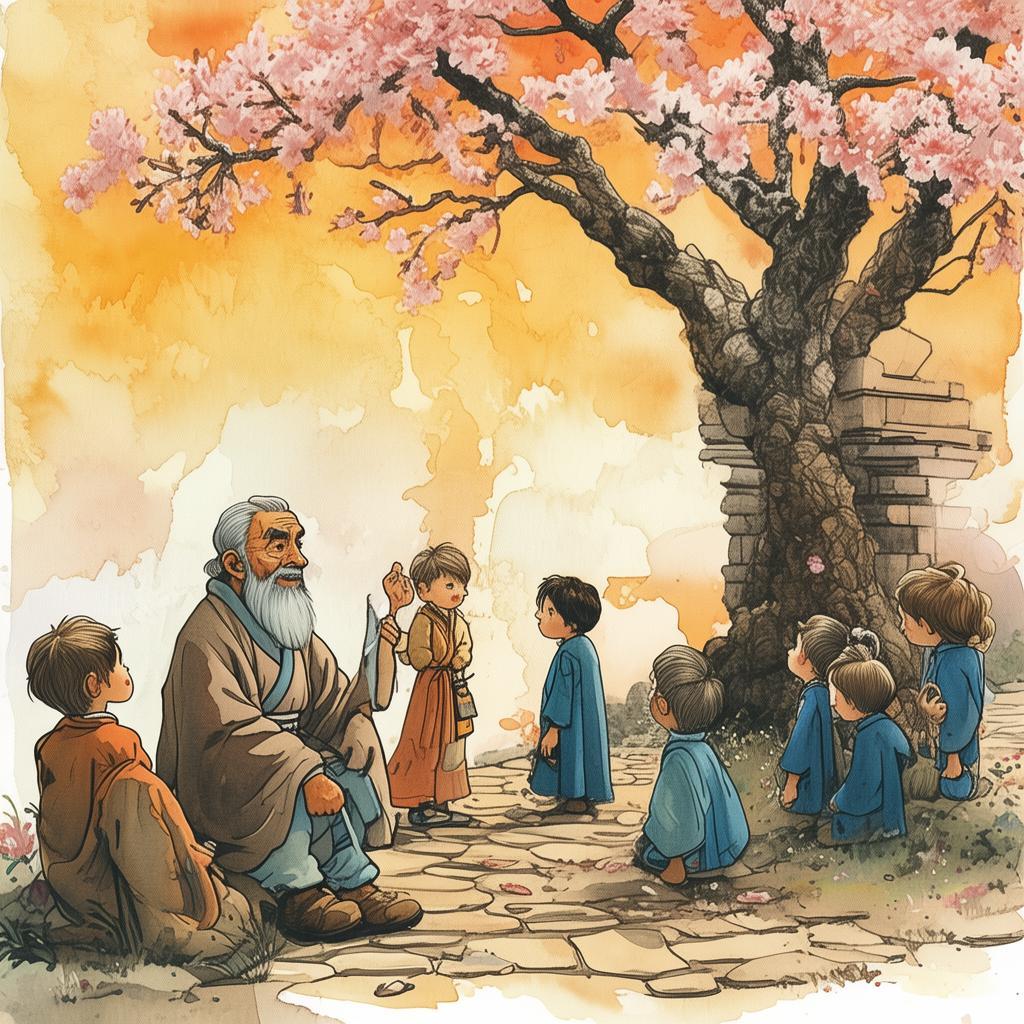Yan Zhenqing's Path to Redemption: A Tale of Forgiveness and Calligraphy
The sun dipped low over the ancient city of Chang'an, casting long shadows over the bustling streets. In a quiet corner of the city, nestled between the fragrant blossoms of a cherry orchard, there stood a modest workshop. It was here that Yan Zhenqing, a master calligrapher, spent his days, his fingers dancing across the delicate rice paper with a grace that belied the weight of his past.
Once, Yan Zhenqing had been a man of great promise, his calligraphy so exquisite that it was said to have the power to bring peace to the world. But that was before the incident that had tarnished his name and shattered his spirit. Years had passed, and while his hands still moved with the same deftness, his heart had grown cold, the warmth of his once vibrant soul replaced by a heavy weight of guilt and regret.
The incident had occurred when he was young and ambitious, eager to prove his worth in the court of the Emperor. It was during a grand competition where he was tasked with writing a poem that would honor the Emperor's achievements. In his haste and overconfidence, he had inadvertently insulted the Emperor's most favored concubine, resulting in a sentence of exile and a lifetime of dishonor.
Yan Zhenqing's journey to redemption began with a simple act of kindness. One day, as he was sketching a delicate brushstroke, a young girl, her eyes wide with wonder, approached his workshop. She was the daughter of a humble farmer, and she had heard of Yan Zhenqing's talent and sought his guidance. In her presence, Yan Zhenqing felt a flicker of the old passion that had once driven him, and he agreed to teach her the art of calligraphy.
As days turned into weeks, the girl, named Ling, became a constant in Yan Zhenqing's life. Her enthusiasm and dedication were infectious, and in her, he saw a reflection of his own youth. Through their shared love of calligraphy, a bond began to form, one that was as delicate as the strokes they traced on paper.
One evening, as they sat under the cherry blossoms, Yan Zhenqing confided in Ling about his past. He spoke of the pain and the regret that had consumed him for years, and how he longed for a chance to make amends. Ling listened intently, her eyes filled with empathy and understanding.
"Perhaps," she said softly, "the truest form of redemption is not in seeking forgiveness from others, but in forgiving oneself."
These words resonated deeply with Yan Zhenqing. He realized that the power of calligraphy, the beauty of the strokes and the harmony of the characters, could be a vessel for his redemption. He decided to create a masterpiece, a scroll that would not only showcase his skill but also serve as a testament to his journey to forgiveness.
The scroll was to be a narrative of his life, from his early promise to the depths of his despair, and finally to the rebirth of his spirit. Each character, each stroke, would tell a story of growth, of learning to let go of past mistakes, and of finding peace within oneself.
As he worked on the scroll, Yan Zhenqing found solace in the act of creation. He poured his heart into each character, his hands moving with a newfound purpose. The scroll became a living thing, a representation of his journey, and as he finished it, he felt a profound sense of release.
The scroll was presented to the Emperor, who was moved by the story it told and the beauty of the calligraphy. The Emperor, recognizing the sincerity of Yan Zhenqing's transformation, granted him a reprieve from his exile and allowed him to return to Chang'an.
Yan Zhenqing's journey to redemption was not without its challenges. There were those who still held him responsible for the past, who saw him as a man unworthy of forgiveness. But he carried on, his heart now filled with compassion and understanding. He continued to teach calligraphy, using his art to inspire others to find their own paths to redemption.
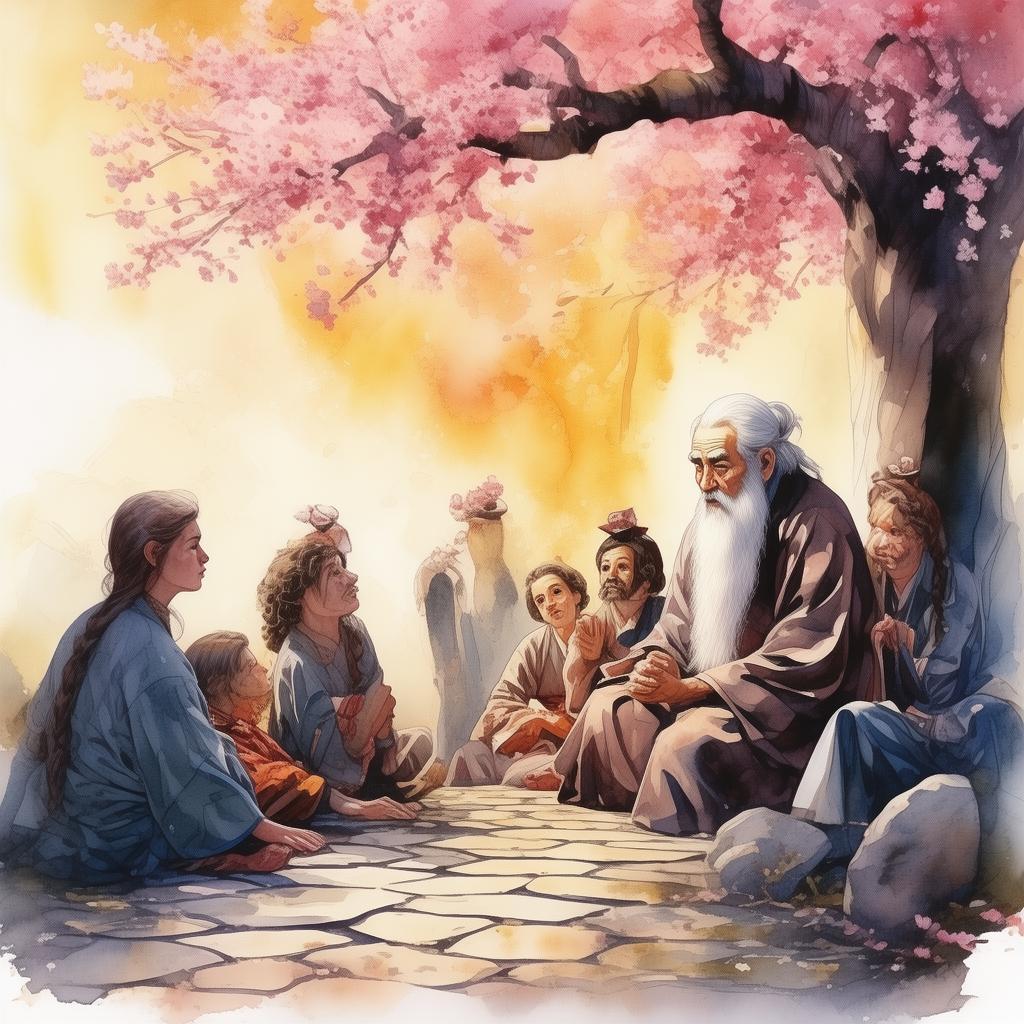
One day, as he was teaching Ling, he looked at her and realized that she had become more than a student; she was his redemption, his reminder that forgiveness is a gift that can be given and received. Together, they would continue to spread the message of forgiveness and the beauty of calligraphy, a testament to the transformative power of the human spirit.
In the end, Yan Zhenqing's story became one of the most celebrated tales of redemption in Chang'an. His scroll, now known as "The Calligrapher's Redemption," was displayed in the imperial palace, a beacon of hope for those who sought to make amends for their past mistakes.
Yan Zhenqing's journey to forgiveness was not an easy one, but it was one that showed that even the most broken souls can find a way to heal and move forward. Through the beauty of his art and the strength of his spirit, he had proven that redemption is not just a possibility, but a reality that can be achieved by all who are willing to take the journey.
✨ Original Statement ✨
All articles published on this website (including but not limited to text, images, videos, and other content) are original or authorized for reposting and are protected by relevant laws. Without the explicit written permission of this website, no individual or organization may copy, modify, repost, or use the content for commercial purposes.
If you need to quote or cooperate, please contact this site for authorization. We reserve the right to pursue legal responsibility for any unauthorized use.
Hereby declared.

